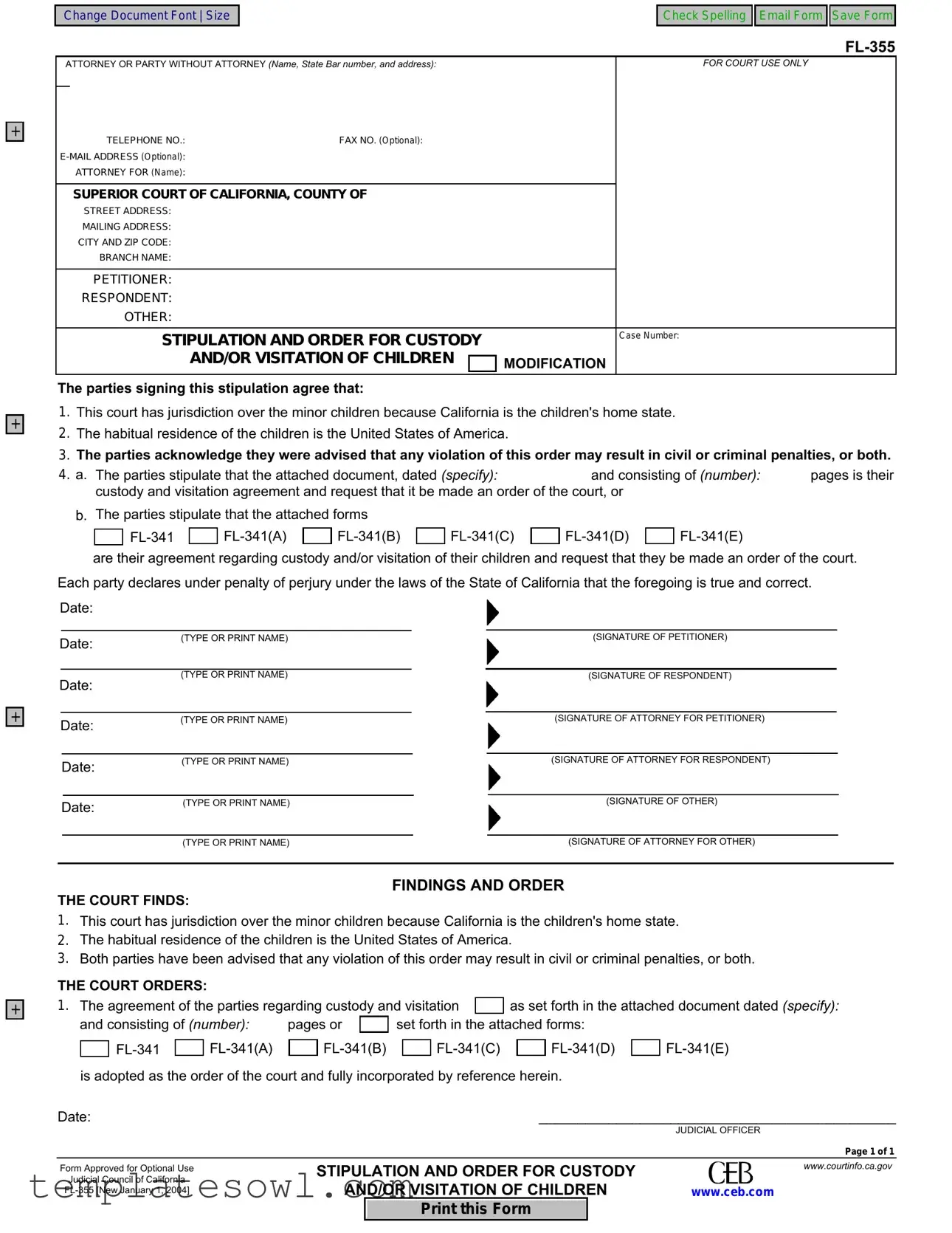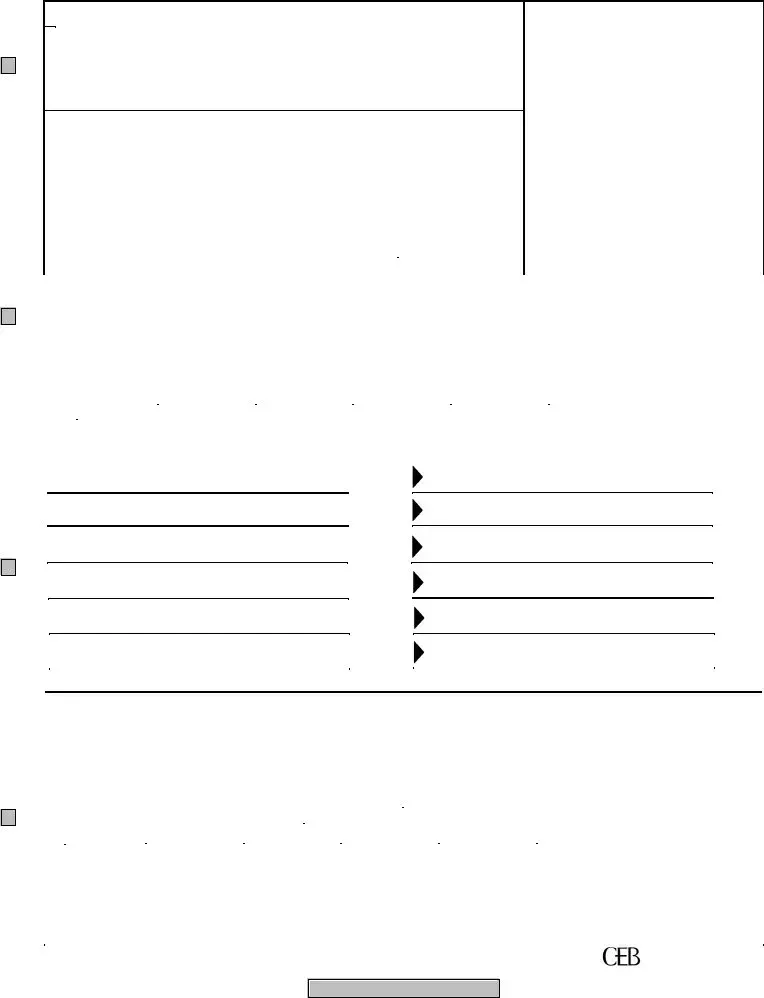What is the FL-355 form used for?
The FL-355 form is used to establish a stipulation and order for custody and/or visitation of children in California. This form allows parents or guardians to agree on custody arrangements and seek court approval for their agreement.
Who can file the FL-355 form?
Either parent or guardian can file the FL-355 form. Both parties must participate in the agreement as it requires signatures from all involved parties. An attorney can also file the form on behalf of a party.
What information do I need to provide in the FL-355 form?
You need to provide several key pieces of information. This includes your name, address, and contact information. You will also need to enter details about the children, including their names and the address where they reside. Additionally, you should attach any custody or visitation agreements or documents that the parties have jointly signed.
What happens after I submit the FL-355 form?
Once you submit the FL-355 form, the court will review it. If everything is in order, the court will approve the stipulation and issue a custody or visitation order. The parties involved will receive a copy of the signed order from the court.
Do I need to attend a court hearing after filing the FL-355 form?
A court hearing is typically not necessary if both parties agree on the custody arrangement and have signed the FL-355 form. However, it is possible that the court may request a hearing to ensure that the agreement serves the best interests of the children.
Can I modify the agreement after submitting the FL-355 form?
Yes, modifications to the custody or visitation agreement can be made after submitting the FL-355 form. However, any changes must be documented and submitted to the court for approval using the appropriate forms or a motion.
What are the consequences of violating the custody order?
Violating the custody order can lead to serious consequences. The parties involved may face civil or criminal penalties, including the possibility of fines or even jail time. It is essential for all parties to adhere to the terms outlined in the court order.
Where can I find the FL-355 form?
The FL-355 form can be accessed online through the California Judicial Council’s website or at your local courthouse. It is also advisable to consult with an attorney if you have questions about completing the form.

